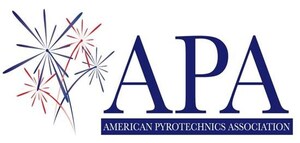With the Liberalization of Consumer Fireworks Laws, the American Pyrotechnics Association Reports That Fireworks-Related Injuries and Fires Have Declined Sharply During the Past Decade
BETHESDA, Md., June 25, 2012 /PRNewswire/ -- According to the American Pyrotechnics Association (APA), backyard fireworks have never been more popular or more in demand. Since 2000, there has been an on-going proliferation of state and local legislation to liberalize consumer fireworks laws and lift fireworks prohibitions.[1] These legislative changes were made in part because of significant improvements in product quality and industry efforts to encourage compliance with the U.S. Consumer Product Safety Commission's regulations, which have resulted in a substantial decline in consumer fireworks injuries. This ever-improving safety record, coupled with the sluggish economy and need for state and local governments to find creative ways to increase revenues, has created a growing trend toward liberalization of fireworks laws throughout the country.
More states than ever before, 46 states plus the District of Columbia and Puerto Rico, allow the sale and use of some types of consumer fireworks. Rhode Island and Arizona were the most recent states to lift their stringent fireworks prohibitions to allow the sale and use of consumer fireworks, specifically hand-held and ground-based sparkling devices such as sparklers, cones and cylindrical fountains and ground-based cake or multiple tube fountains in 2010, whereas Kentucky, Utah and New Hampshire modified their laws in 2011 to allow a broader variety of consumer fireworks to be sold than in previous years, to be followed by the states of Maine and Michigan in 2012.
"With the liberalization of consumer fireworks laws and record-breaking backyard fireworks usage, the number of fireworks-related injuries and fires has dramatically declined," says Julie L. Heckman, Executive Director of the APA. The fireworks-related injury rate is 43% lower than it was in 2000, when the trend in relaxing consumer fireworks laws was first initiated.[2]
And, according to data released by the U.S. Fire Administration's National Fire Incident Reporting System (NFIRS), since 2000, fireworks-related fires have declined by more than 50%, and are at the lowest number in three decades.[3]
According to the APA, when the public is permitted to use consumer fireworks the injuries and fires are reduced because people take the time to plan their fireworks-related activities, thoroughly read the instructions for use, determine a proper area for discharge, and take other measures to ensure spectator safety. Where the fires and injuries most typically occur is where fireworks are prohibited and people choose to use them anyway and do so in a quick and careless manner to avoid getting caught breaking the law. Heckman, says, "I can't think of one other consumer product on the market today that has achieved such record-breaking growth, yet has experienced such a sharp decline in both the number of fires and injuries."
Heckman urged, "While the number of fireworks-related injuries and fires has declined significantly, this is not a time for consumers to be lax about safety. They should follow common sense safety tips when using backyard fireworks as well as obey all local fireworks laws and especially adhere to any burn bans or fire restrictions imposed in areas experiencing drought conditions."[4]
About the American Pyrotechnics Association
The APA is the leading trade association of the fireworks industry. The APA supports and promotes safety standards for all aspects of fireworks. The APA has a diverse membership including regulated and licensed manufacturers, importers, distributors, wholesalers, retailers and professional public display companies. Additional information about the fireworks industry, facts & figures, history of fireworks, state laws, and safety tips can be found on APA's website at www.americanpyro.com.
[1] Legislative activity since 2000: the following states lifted consumer fireworks restrictions and permitted hand-held and ground-based sparkling devices: Connecticut (2000), Maryland (2001), Minnesota (2002) Vermont -sparklers & novelties only (2002), Georgia (2005), Arizona and Rhode Island (2010). More recently, consumer fireworks prohibitions were lifted in the following states: Kentucky permitted full-line consumer fireworks (2011); followed by Utah relaxing its law to include multiple tube cakes and repeaters (2011); New Hampshire now permits reloadable devices (2011); Maine lifted restrictions to allow full-line consumer fireworks with some restrictions (2012); and Michigan authorized full-line consumer fireworks (2012).
[2] http://www.americanpyro.com/pdf/consumption-vs-injuries-graph-2000-2010.pdf
[3] http://www.americanpyro.com/pdf/Fireworks-Related-Fires-1980-2010-(table).pdf
[4] http://www.americanpyro.com/pdf/EnsuringASparklingGoodandSafeTime12.pdf
Media Contact:
Julie L. Heckman, Executive Director
American Pyrotechnics Association
(301) 907-8181
[email protected]
This press release was issued through eReleases® Press Release Distribution. For more information, visit http://www.ereleases.com.
SOURCE American Pyrotechnics Association
WANT YOUR COMPANY'S NEWS FEATURED ON PRNEWSWIRE.COM?
Newsrooms &
Influencers
Digital Media
Outlets
Journalists
Opted In



Share this article